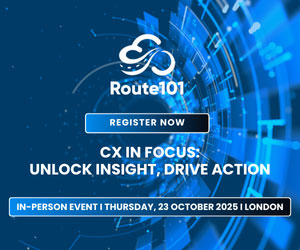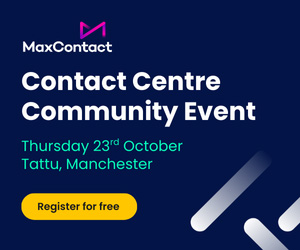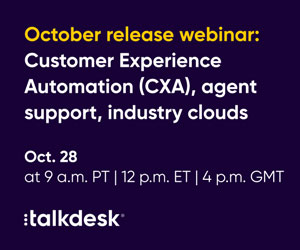In this article Dave Salisbury explores the role of Juran’s rule in the call centre.
We have a problem, speaking plainly and simply; this problem is that a truth has been bent to escape responsibility. Tribus (n.d.) was plain and stated:
“WARNING: In presenting the reasons for change, the leader should accept the responsibility for whatever is wrong. Remember Juran’s rule:
WHENEVER THERE IS A PROBLEM
85% OF THE TIME, IT IS IN THE SYSTEM,
ONLY 15% OF THE TIME WILL IT BE THE WORKER [emphasis in original]”.
Please allow me to note that I have regularly stated that Juran underestimated, and personally I have found that 90-95% of the time, the problem is the process, not the workers.
This is my opinion, and I am not here to convince you but merely to help clarify Juran’s rule and provide some clarity on the writings of Tribus (n.d.) as well as build foundational understanding.
The Situation
A client company has a problem where managers are not holding their people to productivity standards. Deep-diving into the situation, we find several fundamental issues, in no particular order:
- Human Resources tells operations what production goals can be.
- No production goal can be set where 75% of the workers cannot easily meet the goals set.
- Goals cannot be changed without HR approval, a lengthy research process, and a legal team review.
- No productivity goal is published. Feeder metrics, KPIs, and so forth are not communicated or standardized.
- No standard work crosses from one geographic location to another.
- Facility leaders might receive training in other facilities, but the training is broken and disjointed, and the regional managers charged with holding leaders to a standard lack standards and feeder metrics to hold facility leadership accountable across regional areas.
- Currently, no region or facility is meeting any goal regularly or uses a process that can be replicated.
Interestingly, this situation has existed for more than 15 years, and none in higher management remember a time when the situation was different. But every manager will quote a version of Juran’s rule to explain why they are hunting for operational processes to review and change.
Conflict vs. Contention
At its most fundamental level, conflict is about helping spur growth and development and bringing about change in an organized and logical manner. However, I cannot stress this enough: conflict is NOT contention.
Conflict is not born of pride and a desire to feel better about yourself through violence. Conflict can be observed in a disagreement or difference in opinion, but conflict does not include emotional hyperbole (pride).
Conflict should be about mental disturbances spurred by people seeking greater ideas and ideals, personal growth, or team development.
Does conflict lead to contention? Yes, but only because pride entered into the disagreement, emotions were injected, and desires to be right at any cost dictated that it was time for violence.
Let me be perfectly frank, contention and conflict are not the same. While the terms are close, they are distinct and tell different sides of the same story.
First, contention is an act of striving or an assertion. Contention is a violent effort to obtain or protect something vehemently!
There is effort, struggle, and exertion in contention; there are violent efforts, and the core of contention is pride.
Pride breeds animosity, animosity breeds struggle, and struggle is contention, where pride demands that violence is acceptable to achieve the desired end goal. When contending, “The ends justify the means.”
Contention is animosity personified into action, effort, and desires become evident as contention unfolds. We cannot forget these facts about contention.
Consider the following: I went to work in a hostile atmosphere; due to a contract signed, I could not quit and find a new job, and reassignment was not going to happen. Jealousy and pride entered because I was very good at my job, and violence followed like the sun rising after a moonless night.
Contention was born and festered, violence was perpetrated against me, and the violence was acceptable to the organizational leaders as it gave them feelings of accomplishment and satisfaction.
The violence was justified because I was “too good” at my job, made “decisions above my paygrade”, and I “needed to be taught humility”. The result was four disastrous years of struggle, incredible stress levels, and mental torture, with physical acts of violence thrown in to spice up the environment.
I am not bemoaning my fate nor holding myself up as an example of anything, merely hoping to convey that contention stunted organizational growth in everyone unlucky enough to experience this organization during this period. Contention is pride expressed through violence and justified to fit the individual’s desires.
Conflict is a tool; like all tools, it can build, enhance, strengthen, and create when used appropriately. If the tool is improperly used, destruction, damage, and chaos are spawned.
Conflict happens; what a person chooses to do with that conflict and how that person considers conflicting occurrences is how the labels “good”, “bad”, “valuable”, “beneficial”, etc., are applied.
McShane and Von Gilnow (2004, p. 390) postulated, “conflict as beneficial [when] intergroup conflict improves team dynamics, increase cohesiveness, and task orientation. [C]onditions of moderate conflict, motivates team members to work more efficiently toward goals increasing productivity.”
The sentiment regarding conflict as a tool and beneficial is echoed throughout the research of Jehn (1995). Jehn (1995) reflected that the groups researched labelled the conflict as beneficial, good, bad, etc.
Based on the group’s dynamics and the conflicts faced and settled, the groups formed an integrated model for organizational conflict.
Essentially, how the conflict is approached and used by the team members individually and collectively dictates how beneficial the conflict is for the team and the organization.
Rao (2017) built upon previous researchers’ work, perceiving conflict as a tool, and provided vital strategies for leaders to employ conflict.
Rao (2017) provided that conflict builds character, whereas crisis defines character” [p. 93]. Rao (2017) recognized that conflict labels are an individual choice.
In organizational conflict, one team could label the conflict as valuable and beneficial, while another department could label that same conflict as damaging and horrible.
When the conflict in an organization has disparate labels, understanding why conflict is disparately evaluated remains more important than changing the label.
Important to note, conflict is not competition. Although occasionally used synonymously, there are important and distinct differences, important enough for a different article.
Thompson (2008) raised significant points regarding conflict, beginning with a real-life example of how conflict spurred organizational change and growth for the H. J. Heinz Co.
Thompson (2008) calls those who actively work to avoid conflict as those taking “trips to Abilene”. Included in those making trips to Abilene are those who take conflict personally and choose to become offended, as well as those who choose not to see conflict as a method of ignoring conflict.
Thomas (1992) again captured how individual choices about the valuation of conflict open or close the door to the productive use of conflict.
Ignoring conflict, avoiding conflict, and other strategies of not facing conflict form the most dangerous people to be around, for when conflict grows beyond a point where it can no longer be ignored or avoided, that conflict that can destroy people, places, and things.
Thomas (1992) echoes Jehn (1995), Lencioni (2002), and Thompson (2008) in declaring how the distinction between conflict as a process and the structure in which the conflict process occurred is critical to how beneficial the conflict will be for the team, business, or society.
Consider, for a moment the structure of the organizational environment. Conflict is the mental thinking, adherence to operating procedures, and individuals working who become the instigating factor, which threatens what is known or done at the current time.
Hence, Thomas (1992) provided a keen insight into conflict as a tool, purposeful initiation of a process (conflict) to improve a structure (organizational environment).
When people recognize the power of conflict and purposefully employ conflict, everyone receives the potential to improve through conflict (Lencioni, 2002). Thus, conflict continues to be a tool, nothing more and nothing less.
The disparities between organizational conflict labels are critical to understanding the chasm between teams evaluating conflict as the process and business structure.
The gap in understanding conflict’s results can create inhibitions to future organizational conflict and create unnecessary additional conflict processes, all while undermining the organizational structure.
Tribus – Changing the Corporate Culture
Juran’s rule is prescient but based on several foundational situations underpinning their understanding. The following applies regardless of whether the organization is building a learning society or merely keeping the money tap flowing.
- Operations, and by extension, operational goals, productivity standards, and processes for producing a product or service, are the sole domain of operations personnel. Does this preclude Human Resources from having a seat at the operations table? NO! Having HR dictate operational goals to operations is akin to having a bullet tell a shooter how to aim.
- Training is a process. Training requires standards to judge performance as a means to declare training exceeded. However, the quality of training, and the proof of trained personnel, is not an HR function, nor is the trainer the sole person involved in judging the efficacy of producing trained personnel.
- Organizational hierarchies are a process, the business culture is a process, learning is not training, and both learning and training are processes but have two different controlling entities; accountability and responsibility are a cultural extension of the process of organizing people into a functioning business organization.
Consider the fibres of an interwoven rope. Each fibre is twisted with other fibres, then these twists of fibres are turned into more twists, repeated until eventually building a finished rope. The same goes for these preceding foundational aspects.
Operational principles make, like many fibres twist, into a rope that can secure a multiple hundred-ton ship to a pier. How the ropes are used is an operational process, but the core of the rope is these essential aspects.
Some have argued, to their demise, that too many companies with this mindset are suffering from silo mentality, when the obverse is true.
Each department of a functioning business organization relies upon processes similar to these foundational fibres. Operations managers should not go into another business unit and expect to use the same tools from successful operations in those different business units.
For example, while I have been a successful operations manager, the tools I use in leading software teams are decidedly not the same tools I would employ on a production floor, even though both business units are expected to produce a product.
The people are different, their approaches to problems are different, and the environments conducive to product delivery are dynamically opposed.
Similarly, the tools HR would use to solve production issues are not opposed but definitely not employed similarly to those used in troubleshooting a problem in legal or accounting.
Juran understood these foundational situations, Tribus understood these foundational situations, and the best corporate leaders understand these foundational situations.
However, Tribus made clear something dynamic, leadership is not management, and management never achieves anything. The dichotomies between leadership and management could not be more explicit in today’s business operations.
Tribus (n.d.) calls upon the words of Homer Sarasohn, stating [emphasis in original]:
“THE LEADER MUST, HIMSELF, BE AN EXAMPLE
OF THE CHARACTERISTICS HE WOULD LIKE TO SEE
IN HIS FOLLOWERS.”
“Managers must practice what they preach.
DON’T SAY, “FOLLOW ME; I’M BEHIND YOU ALL THE WAY”
(IT MAKES EVERYONE GO IN CIRCLES).”
Application
What do we find in my client? Managers who first do not know the work their operational employees do. Managers who are disconnected by good jobs to the point they never engage in the better and best jobs their positions of trust demand.
The managers are not led but are managed and never were trained for their current positions. These three factors are why the client company is a dumpster fire of potential (blue money), where the bottom line evaporates, and nobody can explain why.
However, like in the Shakespearian play “Much Ado About Nothing”, a lot of noise is made but goes nowhere fast!
Unfortunately, the much ado about nothing is worsened, not improved, by Kaizen, Six Sigma, Agile, and Lean efforts at process improvement.
The core problems are considered “untouchable”, “too dynamic”, or “too extensive” ever to be improved upon, and the new manager settles to change an operational process instead of core problems.
Essentially proclaiming, “Follow me, I’m behind you all the way,” the operational employees keep circling the drain.
What Is the Solution?
Solution generation for my client company begins with understanding the compelling evidence there is a problem. Right now, the client thinks, “We are big enough to absorb these insignificant issues in the name of Diversity, Equity, and Inclusion.”
This is where every business begins its failure; no business can long survive dumpster fires of potential (blue money). People leave, and this has a high replacement cost.
People work slowly or below their potential, which is a tremendous cost in green (cash) money and potential (blue money). Operational costs increase, increasing customer costs, and the loss of customers is a dynamic cost to the business.
After admitting a problem, the next step is envisioning an end state. Since I began to lead men and women, I have advocated a lesson I learned as a teenager, “Never take your body where your brain has not already travelled.”
If you cannot envision the result, do not start trying to make changes until you have envisioned an end state. I sliced my fingers badly with a knife while cutting onions.
Why did I slice my fingers and not the onion? I did not understand the end state and assumed I could start cutting and reach an acceptable end state (diced onion).
I should never have started cutting; between the loss of the onion and the damage to my fingers, the lesson was not “Never cut onions again”, but “never begin something without a clear end state (goal) in mind”.
The third preparatory step to building a solution is START! The client has this problem of always wanting clear instructions, plans, and supplies on hand before beginning. The speed of business requires action, not plans and instructions.
Take the first logical step and begin! Tribus (n.d.) makes this clear with the assurance, “There is a sensible first step.” Take that step! I will reiterate a point Tribus (n.d.) makes, employees work IN a system of processes, and the manager should work ON the system of processes, with the employees’ help.
A manager should be analogous to a mentor, who, like a leader, after understanding the vision, looks sideways and builds people to meet their level before taking that next logical step into the darkness.
Conclusion
The simple truth is that Juran’s rule has been used as an excuse to dodge responsibility in too many operations, businesses, and organizations. Like my client, the good news is that change is possible with the people you have right now.
My client is not a bad company; your company is not inherently bad. People are intrinsically good, and when we better understand the fibres that help tie Juran’s rule to reality, we can employ reframing to shut down the noise and move from much ado about nothing to effective management and leadership.
How do we reframe:
- Establish legitimacy and shift from passive to active.
- Bring outsiders into the discussion, but do not shift responsibility for developing the solution or owning the goals.
- Get the stakeholder’s definitions in writing – Common words, AREN’T. Common understanding is a goal to strive towards.
- Ask what is missing.
- Consider multiple categories, seek out those subject-matter experts, and add them to the discussion as equals.
- Analyse positive and negative data equally without bias.
- Question the objectives, focus on the future, and keep moving forward.

As we, the leaders of call centres, strive to change our understanding, realize our roles, and build people, we will build people, not processes, to meet the future.
The first step is committing to the decision framed in the question: “Is your company a money tap or a service to the greater good of society?”
Thanks to Dave Salisbury for this article
References:
The references are included if you want to further research conflict as beneficial.
Amason, A. C. (1996). Distinguishing the effects of functional and dysfunctional conflict on strategic decision making: Resolving a paradox for top management teams. Academy of Management Journal, 39(1), 123-148. doi:http://dx.doi.org.contentproxy.phoenix.edu/10.2307/256633
Baron, R. A. (1991). Positive Effects of Conflict: A Cognitive Perspective. Employee Responsibilities & Rights Journal, 4(1), 25-36.
Brazzel, M. (2003). Chapter XIII: Diversity conflict and diversity conflict management. In D. L. Plummer (Ed.), Handbook of diversity management: Beyond awareness to competency based learning (pp. 363-406). Lanham, MD: University Press of America, Inc.
Du, F., Erkens, D. H., & Xu, K. (2018). How trust in subordinates affects service quality: Evidence from a large property management firm. Business.Illinois.edu. Retrieved from https://business.illinois.edu/accountancy/wp-content/uploads/sites/12/2018/03/Managerial-Symposium-2018-Session-IV-Du-Erkens-and-Xu.pdf
Jehn, K. A. (1995). A multi-method exanimation of the benefits and detriments of intragroup conflict. Administrative Science Quarterly, 40, 256-282.
Lencioni, P. (2002). The five dysfunctions of a team: A leadership fable. Hoboken, NJ. John Wiley & Sons.
Lumineau, F., Eckerd, S., & Handley, S. (2015). Inter-organizational conflicts. Journal of Strategic Contracting and Negotiation, 1(1), 42-64. doi:10.1177/2055563614568493
McShane, S. L., & Von Gilnow, M. A. (2004). Organizational Behavior, Third Edition. Boston: McGraw-Hill Companies.
Moeller, C., & Kwantes, C. T. (2015). Too Much of a Good Thing? Emotional Intelligence and Interpersonal Conflict Behaviors. Journal of Social Psychology, 155(4), 314-324. doi:10.1080/00224545.2015.1007029
Rao, M. (2017). Tools and techniques to resolve organizational conflicts amicably. Industrial and Commercial Training, 49(2), 93-97. doi:10.1108/ict-05-2016-0030
Thomas, K. W. (1992). Conflict and conflict management: Reflections and update. Journal of Organizational Behavior, 13(3), 265-274.
Thompson, L. L. (2008). Chapter 8: Conflict in teams – Leveraging differences to create opportunity. In Making the team: A guide for managers (3rd ed., pp. 201-220). Upper Saddle River, NJ: Prentice-Hall.
Author: Dave Salisbury
Reviewed by: Jonty Pearce
Published On: 12th Aug 2022 - Last modified: 2nd Apr 2025
Read more about - Expert Insights, Dave Salisbury





































